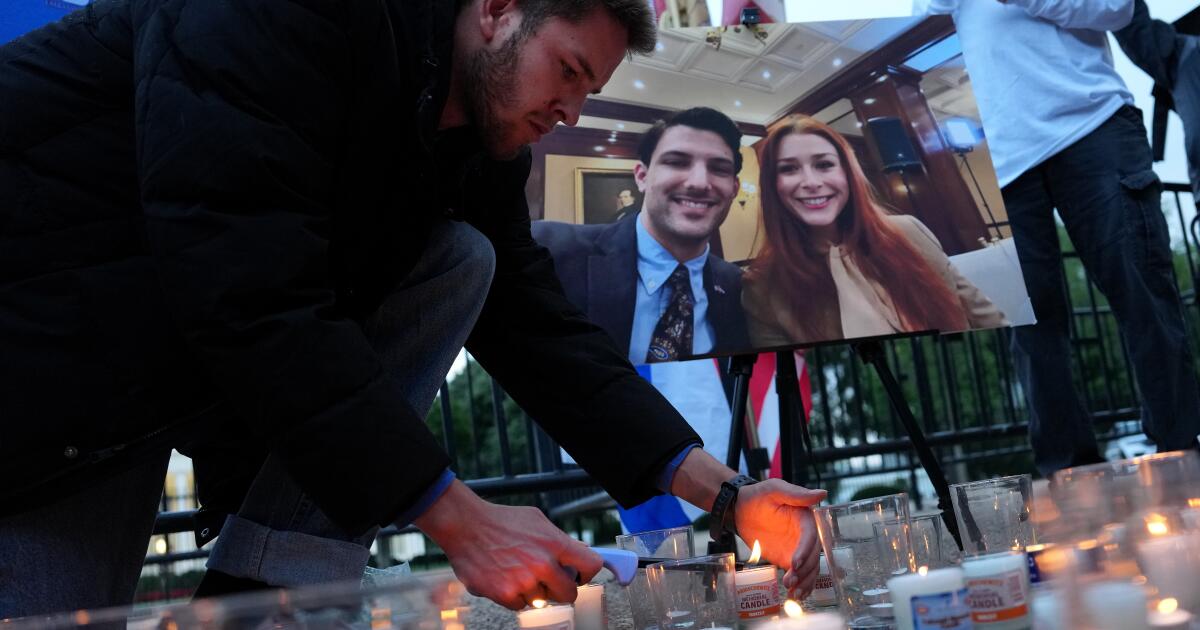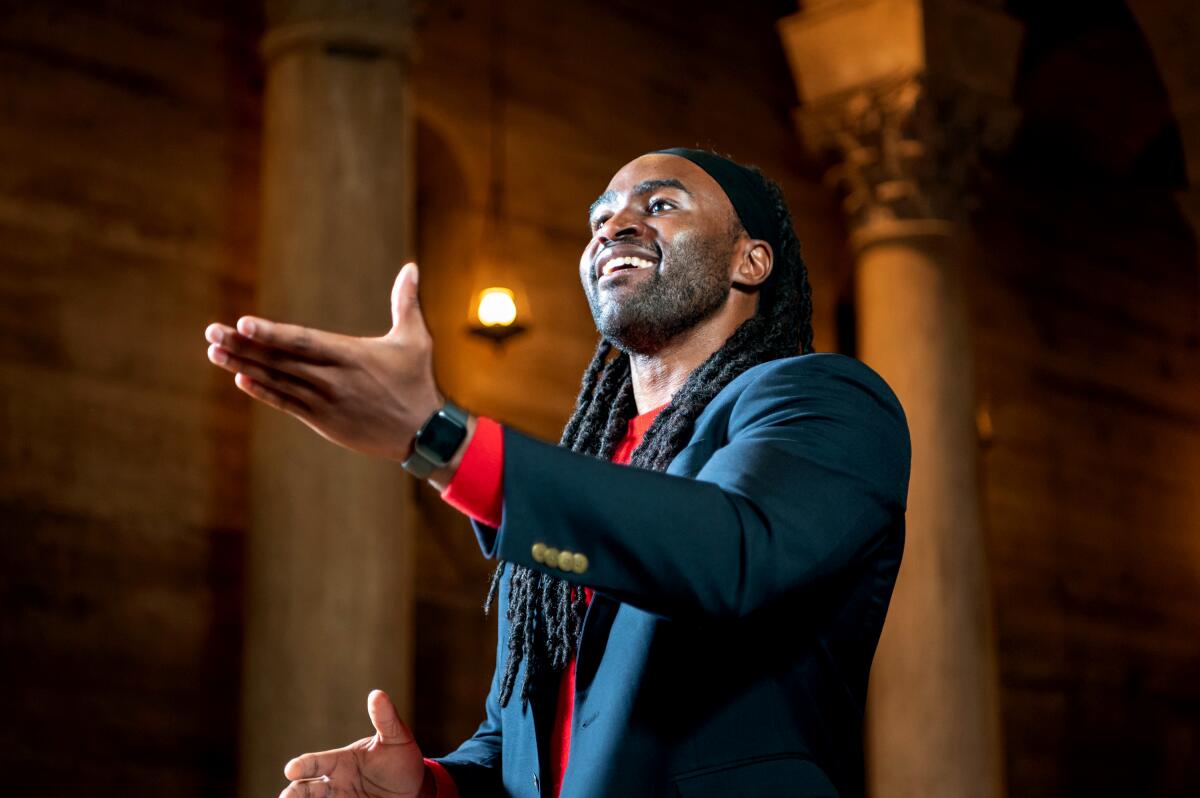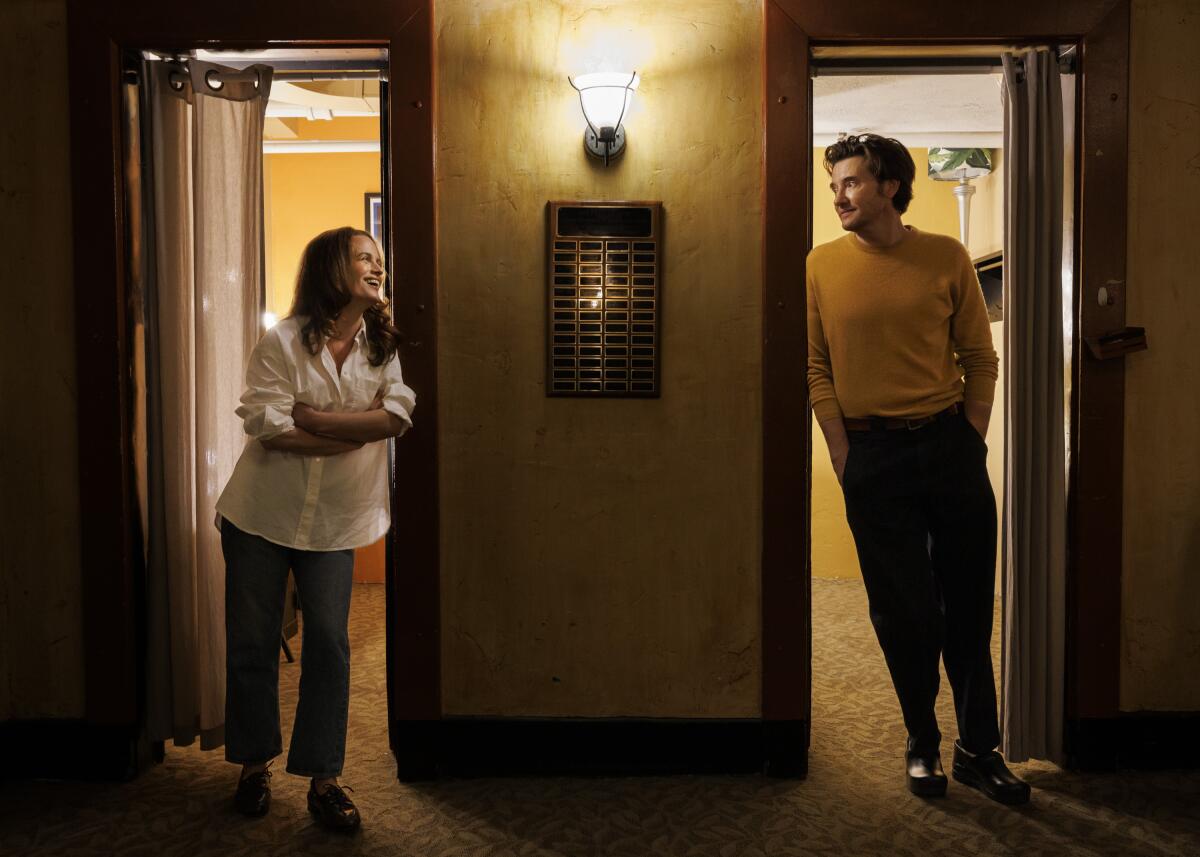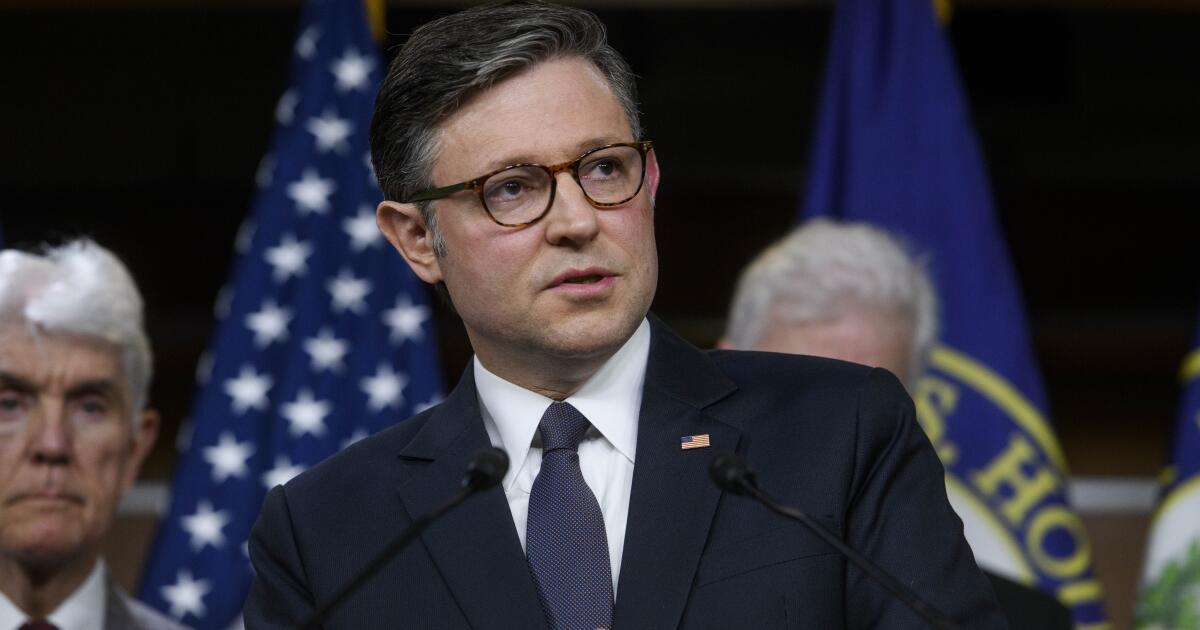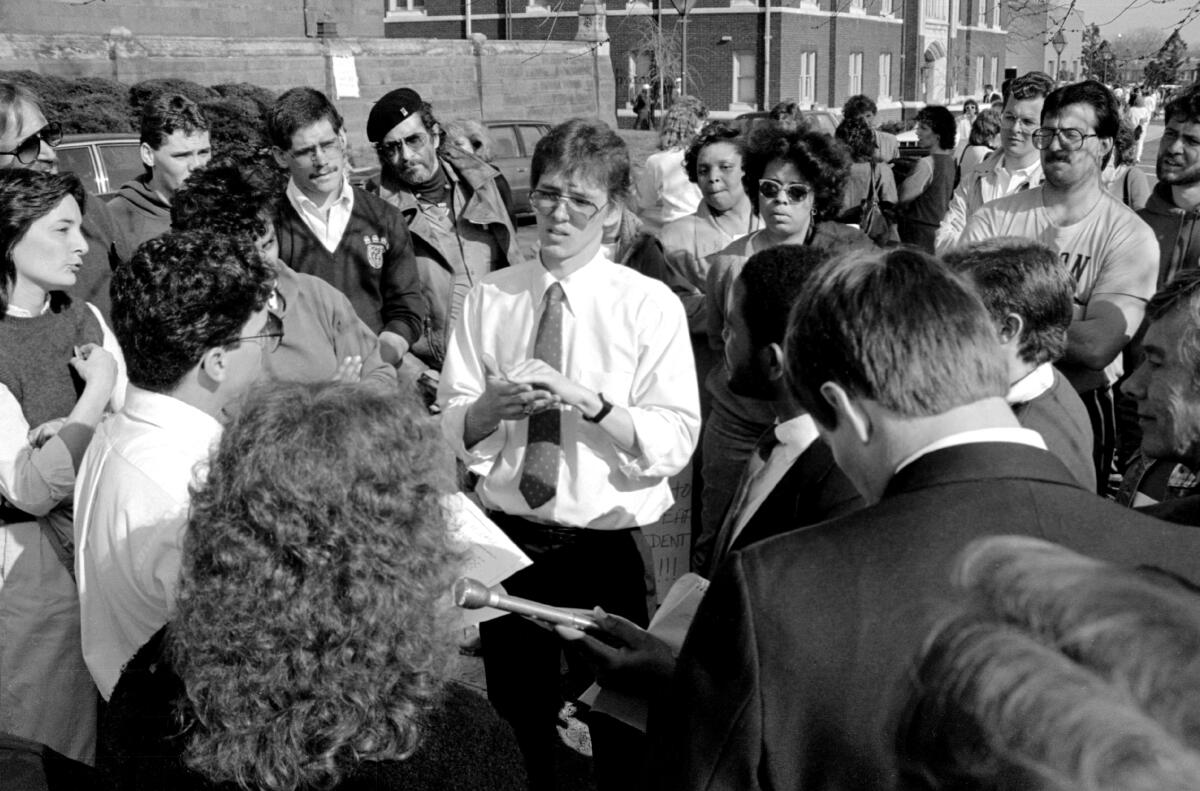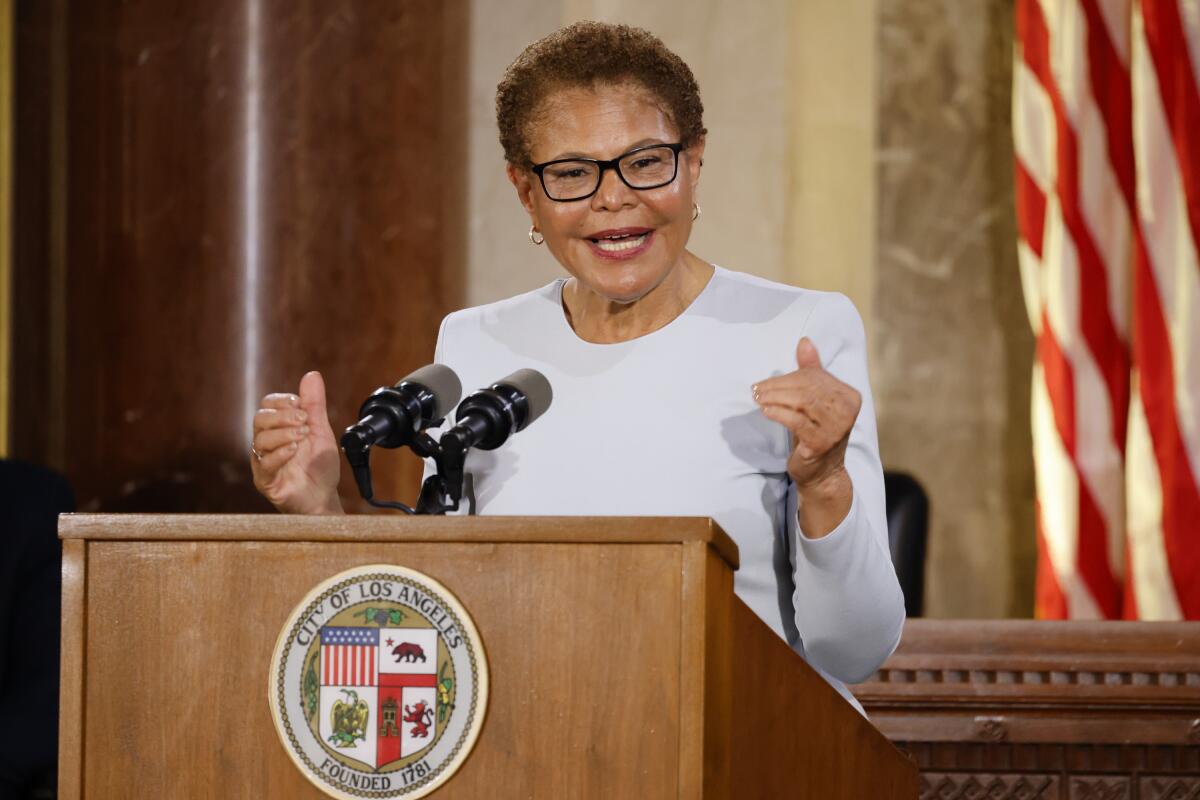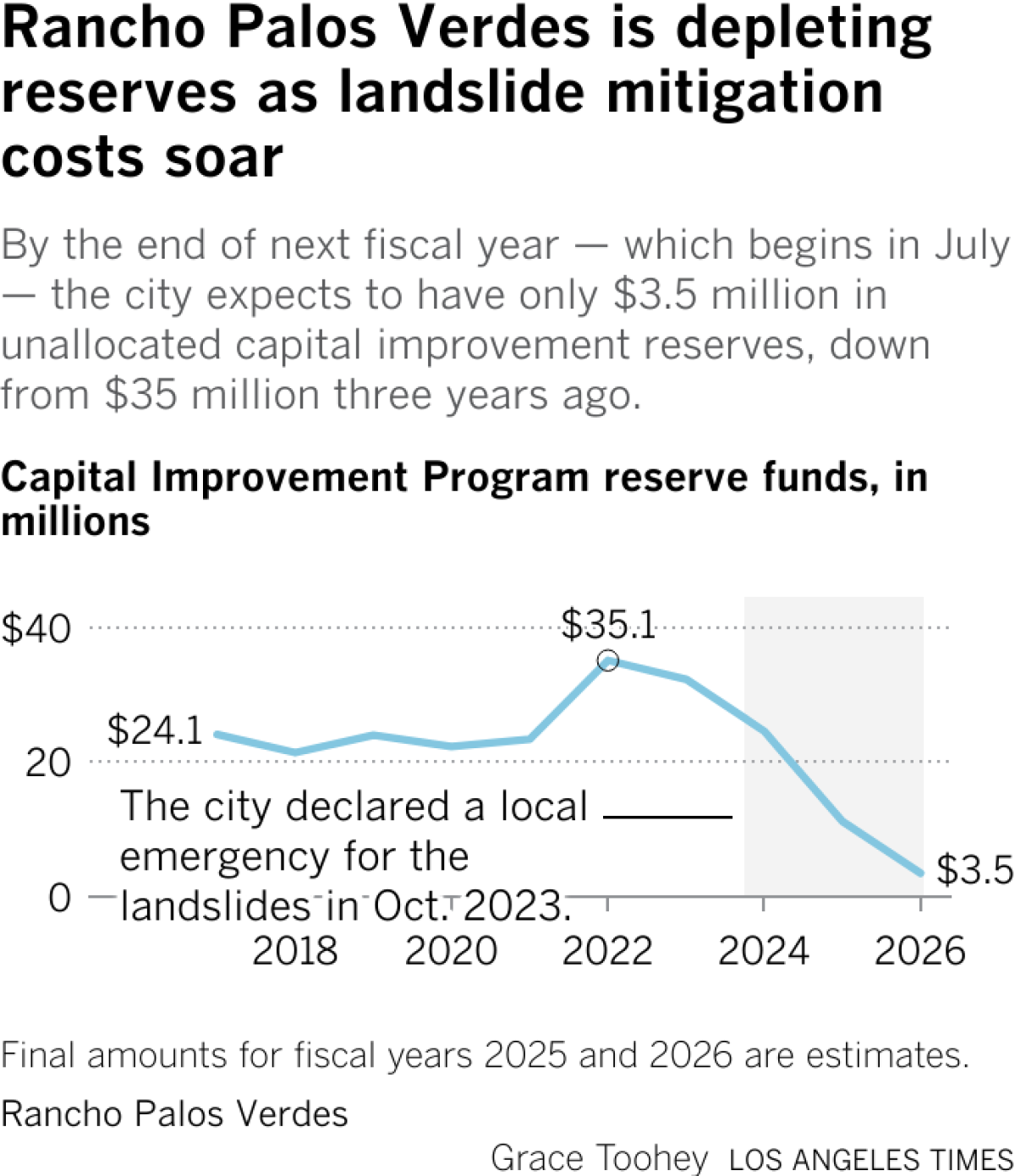Contributor: The Israeli Embassy killings and the ominous turn in political violence
Actions, we know, have consequences. And an apparent Marxist’s cold-blooded murder of two Israeli Embassy staffers in Washington on Wednesday night was the natural and inevitable consequence of a conscientious, years-long campaign to dehumanize Jews and otherize all supporters of the world’s only Jewish state.
Seriously, what did you think was going to happen?
Some of President Trump’s more colorful all-caps and exclamation-mark-filled social media posts evince an impending jackboot, we’re sometimes told. (Hold aside, for now, columnist Salena Zito’s apt 2016 quip about taking Trump seriously but not literally.) Words either have meaning or they don’t. And many left-wing Americans have, for a long time now, argued that they have tremendous meaning. How often, as the concept of the “microaggression” and its campus “safe space” corollary took off last decade, were we told that “words are violence”? (I’ll answer: A lot!)
So are we really not supposed to take seriously the clear calls for Jewish genocide that have erupted on American campuses and throughout American streets since the Hamas pogrom of Oct. 7, 2023? Are we really supposed to believe that chants such as “globalize the intifada,” “from the river to the sea, Palestine will be free” and “there is only one solution, intifada revolution” are vague and open to competing interpretations?
That doesn’t even pass the laugh test.
When pro-Israel Jewish American Paul Kessler died after being hit on the head during a clash of protesters in Thousand Oaks on Nov. 5, 2023, that is what “intifada revolution” looks like in practice. When Israeli woman Tzeela Gez was murdered by a jihadist while en route to the hospital to deliver her baby earlier this month, that was what “from the river to the sea” looks like in practice. And when two young Israeli Embassy staffers were executed while leaving an event this week at Washington’s Capital Jewish Museum, that is what “globalize the intifada” looks like in practice.
Really, what did you think was going to happen?
Indeed, it is the easily foreseeable nature of Wednesday night’s slayings that is perhaps the most tragic part of it all. The suspect in the deaths of Yaron Lischinsky and Sarah Milgrim left behind a handy manifesto laying out a clear political motivation. This was not a random drive-by shooting. Hardly. This was a deliberate act — what appears to be an act of domestic terrorism. And the suspect, Elias Rodriguez, has a long history of involvement in far-left activist causes. If the killer intended to target Jews, then the fact that both victims were apparently Christian only underscores the “globalize” part of “globalize the intifada.”
Zito had it right back in 2016: Trump’s social media posts should be taken seriously, not literally. But when it comes to the murderous, genocidal clamoring for Jewish and Israeli blood that has become increasingly ubiquitous ever since the Jews themselves suffered their single bloodiest day since the Third Reich, such anti-Israel and antisemitic words must be taken both seriously and literally.
A previous generation of lawmakers once urged Americans to fight the terrorists “over there” so that they can’t harm us “here.” How quaint! The discomfiting reality in the year 2025 is this: The radicals, both homegrown and foreign-born alike, are already here. There are monsters in our midst.
And those monsters are not limited to jihadists. Domestic terrorists these days come from all backgrounds. The deaths of two Israeli diplomats are yet another reminder (not that we needed it): Politically motivated violence in the contemporary United States is not an equivalent problem on both the left and the right.
In 2012, Floyd Lee Corkins attempted to shoot up the socially conservative Family Research Council because he heard it was “anti-gay.” In 2017, James Hodgkinson shot up the Republican congressional baseball team a few weeks after posting on Facebook that Trump is a “traitor” and threat to “our democracy.” In 2022, Nicholas Roske flew cross-country to try to assassinate Supreme Court Justice Brett Kavanaugh and thus prevent Roe vs. Wade from being overturned. Earlier this year, anti-Elon Musk activists burned and looted Teslas — and assaulted Tesla drivers — because of Musk’s Trump administration work with his cost-cutting Department of Government Efficiency. And who can forget Luigi Mangione, who is charged in the shooting death of UnitedHealthcare Chief Executive Brian Thompson?
Both “sides” are not culpable here. They just aren’t. Israel supporters in America aren’t out there gunning down people waving the PLO flag. Nor are capitalists out there gunning down socialists.
There is a real darkness out there in certain — increasingly widespread — pockets of the American activist left. Sure, parts of the right are also lost at the moment — but this is not an apples-to-apples comparison.
Regardless, the violence must end. And we must stop treating open calls for murder or genocide as morally acceptable “speech.” Let’s pull ourselves back from the brink before more blood is shed.
Josh Hammer’s latest book is “Israel and Civilization: The Fate of the Jewish Nation and the Destiny of the West.” This article was produced in collaboration with Creators Syndicate. @josh_hammer
Insights
L.A. Times Insights delivers AI-generated analysis on Voices content to offer all points of view. Insights does not appear on any news articles.
Viewpoint
Perspectives
The following AI-generated content is powered by Perplexity. The Los Angeles Times editorial staff does not create or edit the content.
Ideas expressed in the piece
- The article argues that the killings of two Israeli Embassy staffers were a “natural and inevitable consequence” of widespread anti-Semitic rhetoric and the dehumanization of Jews since the October 7 Hamas attacks, citing officials who labeled the shooting an “act of terror”[1][3].
- It links the attack to pro-Palestinian chants like “globalize the intifada” and “from the river to the sea,” asserting these phrases are explicit calls for violence rather than protected political speech[1][3].
- The author claims political violence in the U.S. is disproportionately perpetrated by the far left, citing historical examples such as the 2012 Family Research Council shooting and the 2022 attempted assassination of Justice Brett Kavanaugh[3].
- Hammer emphasizes that the suspect’s far-left activism and manifesto reveal a deliberate, ideologically motivated act of domestic terrorism, underscoring a broader trend of anti-Israel radicalization[1][3].
Different views on the topic
- Critics caution against broadly attributing isolated violent acts to entire political movements, noting that most activists condemn violence while advocating for Palestinian rights through nonviolent means[1][2].
- Some argue that condemnations of Israeli government policies should not be conflated with anti-Semitism, emphasizing the distinction between criticizing a state and targeting a religious group[1][3].
- Legal experts highlight that while the attack was labeled antisemitic, the victims’ identities as non-Jewish Israeli staffers complicate narratives framing the shooting solely as religiously motivated hatred[1][2].
- Advocates for free speech warn against equitating protest chants with incitement, stressing the importance of contextualizing rhetoric to avoid suppressing legitimate political dissent[1][3].
